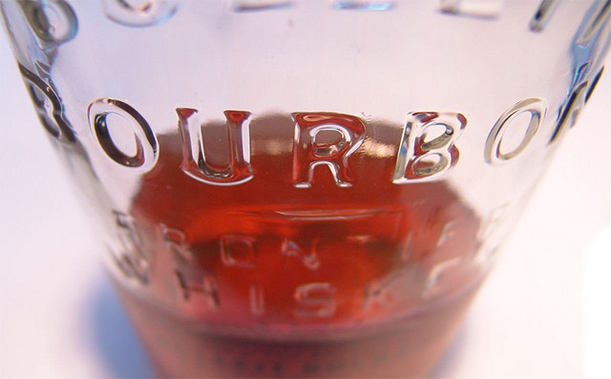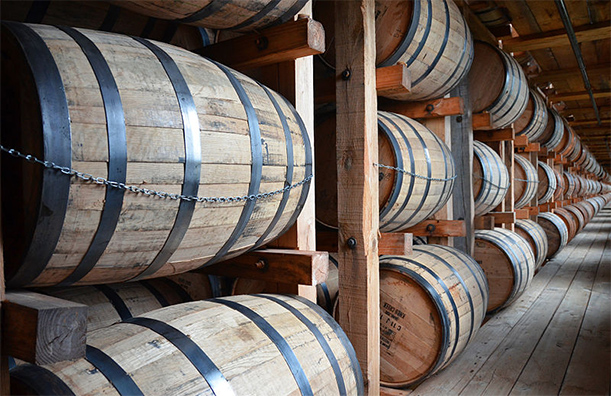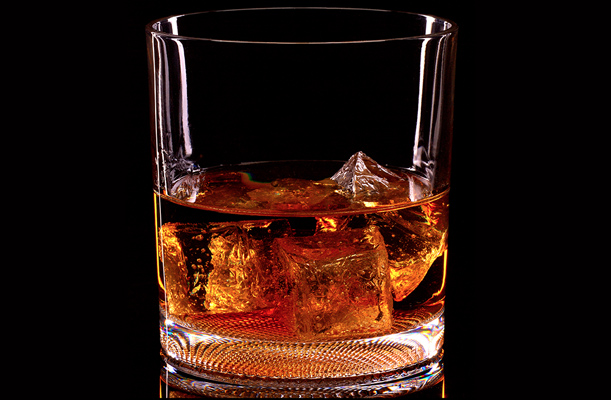Where Bourbon Really Got Its Name and More Tips on America’s Native Spirit
Michael Veach is Louisville’s unofficial bourbon ambassador. We asked him to give us some history as well as some suggestions on what to drink

Kentucky Bourbon. (Photo courtesy of flickr user Markyboy81).
If there’s just one thing I take away from my conversation with Louisville, Kentucky, historian Michael Veach, it’s that there is no wrong way to drink bourbon. Dilute it with water, mix it with ginger ale, or stir in a liqueur or two and call it something fancy like “The Revolver.” According to Veach, makers of America’s native spirit are just as pleased to see their product served up with a maraschino cherry as they are watching it poured straight into a shot glass. And you know? I believe him. Because when it comes to all things bourbon, Veach is Louisville’s go-to source.
As associate curator of special collections at Louisville’s Filson Historical Society and a former archivist for United Distilleries, situated in the heart of Kentucky Bourbon Country, 54-year-old Veach has spent decades studying bourbon history. Many local residents consider him the spirit’s unofficial ambassador, and it’s a title he’s undoubtedly earned. Veach once spent an entire year sampling the 130+ bourbons on hand at the city’s Bourbons Bistro and recording his thoughts in what would become the restaurant’s ‘Bourbon Bible,’ a binder overflowing with tasting notes and food pairing suggestions that now serves as a resource for the restaurant’s patrons. More recently Veach parlayed his expertise into a book, Kentucky Bourbon Whiskey: An American Heritage, which tells the history of the bourbon industry from the Whiskey Rebellion straight through to the 21st century. The text highlights often-overlooked aspects of the industry—such as the technology behind the spirit’s production—and includes a few of Veach’s own theories that may even surprise bourbon aficionados.
Take his argument on where the name ‘bourbon’ comes from. Visit any local distillery and you’ll likely hear that the moniker derives from Bourbon County—once part of a larger expanse known as Old Bourbon—in upstate Kentucky. However, says Veach, the timeline just doesn’t match up.
Though the Filson Historical Society is home to bourbon labels printed as early as the 1850s, he says, “the story that the name ‘bourbon’ comes from Bourbon County doesn’t even start appearing in print until the 1870s.” Instead, Veach believes the name evolved in New Orleans after two men known as the Tarascon brothers arrived to Louisville from south of Cognac, France, and began shipping local whiskey down the Ohio River to Louisiana’s bustling port city. “They knew that if Kentuckians put their whiskey into charred barrels they could sell it to New Orleans’ residents, who would like it because it tastes more like cognac or ‘French brandy’,” says Veach.
In the 19th century, New Orleans entertainment district was Bourbon Street, as it is today. “People starting asking for ‘that whiskey they sell on Bourbon Street,’” he says, “which eventually became ‘that bourbon whiskey.’” Still, Veach concedes, “We may never know who actually invented bourbon, or even who the first Kentucky distiller was.”

Kentucky bourbon barrels. (Photo courtesy Wikimedia Commons).
For those unfamiliar with what makes bourbon bourbon, here’s a brief primer. Contrary to popular belief, bourbon distilling is not limited to Kentucky, though the state does produce the lion’s share (Veach attributes this to the area’s excellent-quality limestone-filtered water as well as Kentucky’s extreme weather patterns).
For a spirit to be considered bourbon it must adhere to six standard rules: It must be made in the U.S.; aged in new, charred white oak barrels; and be at least 51 percent corn. It also must be distilled at less than 160 proof (80 percent alcohol by volume) and entered into a barrel at below 125 proof. Lastly, there can be no artificial coloring or flavor (hence the reason Jack Daniel’s is a Tennessee whiskey: it’s filtered over maple wood chips before bottling). The darker the bourbon, the higher the alcohol content; and for a true taste of its complexities, open your mouth while sipping.
As a lifelong Louisvillian, Veach not only drinks bourbon—he also has a few cherished places for imbibing the local spirit. Along with Bourbons Bistro, Veach pays occasional visits to the bar at Louisville’s historic Brown Hotel (home to the city’s signature Hot Brown sandwich), as well as the iconic Seelbach hotel, a four-star property that F. Scott Fitzgerald mentions in The Great Gatsby (like Veach, Jay Gatsby’s golden girl, Daisy Buchanan, is also from Louisville). Veach also recommends Louisville’s Dish on Market for both its fine bourbon selection and its presidential breakfast: an ode to President Harry Truman, who stayed at the Seelbach while in town. “Every morning he’d have one egg, a slice of bacon, buttered toast, cup of fruit, glass of milk, and a shot of Old Granddad,” he says.
However, Veach admits he’s much less a tour guide and more a historian who loves bourbon, a notion that his book well reflects. In Kentucky Bourbon Whiskey, American history and bourbon history—from the Pure Food & Drug Act’s effects on bourbon to how Prohibition contributed to the Great Depression—are distinctly intertwined. Still, there’s one thing you won’t find within its pages: bourbon ratings and reviews. “I really don’t have a favorite bourbon,” says Veach, “There are just too many different flavors and flavor profiles. It’s like asking what’s your favorite wine.”

Glass of bourbon. (Photo courtesy of flickr user Kyle May).
Choosing a Bourbon
As with wine, some bourbons pair better with a particular dish or are best enjoyed during a certain season. Veach suggests the following:
For Father’s Day – “I like Elmer T. Lee Single Barrel,” he says. “At $30-35, it’s not overly expensive—though remains a step up from your normal everyday whiskey. Elmer’s about 93 years old, but he still comes down to the distillery on Tuesday mornings to pick the barrels himself.”
Relaxing after a Long Workday – Veach recommends something refreshing for spring/summer, like a Four Roses Yellow Label. “It’s light but flavorable,” he says. “Not overly complicated, but with enough complexity to give you a little interest.”
To Accompany a Nice Steak “There are so many good ones,” says Veach, “but the last time I had steak I enjoyed it with a neat glass of Old Grand-dad Bottled-in-Bond. It’s got a nice fruitiness that I find compliments meat well.”